#india-china border dispute upsc
Explore tagged Tumblr posts
Text
भारत और चीन के युद्ध की शुरुआत कहां से हुई?
आज हम बात करेंगे, दो ऐसे पड़ोसियों की जो एशिया के साथ-साथ पूरी दुनिया में एक बहुत ऊंचा मुकाम रखते है। टाइटल से यह स्पष्ट समझा जा सकता है कि बात यहां पर भारत और चीन के विषय में ही होने वाली है, तो आइए बेझिझक और बिना लाग लपेट मुद्दे पर आते है। भारत-चीन का युद्ध खासतौर से 1962 में कई कारणों से हुआ था। शुरू से ही पाकिस्तान का हमदर्द रहा चीन भारत को खुद से आगे बढ़ता हुआ नहीं देख सका। हालांकि, 1962 का…
#Aksai Chin map#Causes of conflict between India and China#china-india border dispute 2024#How much land India lost to China in 1962 war#India China border dispute map#india-china border dispute pdf#india-china border dispute upsc#india-china war 1967#Prakhar Pandey
0 notes
Text

What Current Geographical Issues Should You Focus on for UPSC?
The UPSC Civil Services Examination (CSE) is a highly competitive exam that demands a deep understanding of various subjects, including Geography. For UPSC aspirants in Indore looking to excel in this crucial subject, staying updated on current geographical issues is important. This blog, written with the guidance of UPSC coaching experts in Indore, will explore the most relevant contemporary geographical concerns you should focus on for your UPSC course preparation.
Why Current Geographical Issues Matter in UPSC
Geography is a dynamic subject with constant changes shaping landscapes, demographics, and geopolitical realities. Focusing on current geographical issues in your UPSC course preparation offers several advantages:
Enhanced Relevance: The UPSC course syllabus emphasizes the contemporary application of geographical knowledge. Understanding current issues demonstrates your ability to analyze and interpret real-world scenarios, impressing examiners.
Stronger Answer Building: By incorporating recent geographical trends and events into your answers, you can showcase in-depth knowledge and provide a well-rounded perspective.
Essay Paper Advantage: Current geographical issues often form the foundation of compelling essay topics. Demonstrating your grasp of these issues can elevate the quality of your essays.
Top Current Geographical Issues for UPSC
Here's a breakdown of some of the most crucial current geographical issues you should prioritize in your UPSC course preparation, along with insights from UPSC coaching institutes in Indore, with specific examples from 2024:
Climate Change and its Impact: Climate change is arguably the most pressing geographical issue of our time. Focus on understanding its effects on weather patterns like the unprecedented heat waves that swept across India in April 2024, rising sea levels threatening coastal communities, glacial retreat in the Himalayas impacting water resources, and its impact on agriculture, food security, and migration patterns. A UPSC course in Indore can equip you with the latest data and trends in this critical area.
Water Scarcity and Management: Water scarcity is a growing concern due to population growth, climate change, and unsustainable water use practices. UPSC coaching in Indore can guide you on comprehending water management strategies, transboundary water disputes like the ongoing water-sharing disagreements between India and Pakistan, and initiatives like rainwater harvesting and water conservation being implemented by various states in 2024.
Disaster Management: Natural disasters like earthquakes, floods, and cyclones are a recurring threat. Understanding disaster preparedness, mitigation strategies, and effective response mechanisms is crucial. The best UPSC coaching institutes in Indore can provide insights into recent disaster management practices and policies, such as the learnings from the devastating floods that affected Assam and Bihar in June 2024.
Urbanization and its Challenges: Rapid urbanization presents both opportunities and challenges. Focus on understanding urban sprawl in cities like Bengaluru and Mumbai, challenges related to slums and inadequate infrastructure, government initiatives for sustainable city planning like the Smart Cities Mission, and their impact on the surrounding environment. Look to UPSC coaching institutes in Indore for guidance on analyzing recent government initiatives and global trends in urbanization.
Geopolitical Issues with a Geographical Context: Geographical factors significantly influence international relations. UPSC coaching in Indore can help you delve into issues like maritime disputes in the South China Sea, border conflicts like the ongoing tensions between India and China at the Line of Actual Control (LAC), resource scarcity and its impact on regional stability, and their geopolitical implications.
Mastering the Geographical Landscape with a UPSC Course in Indore
Given the importance of current geographical issues, enrolling in a reputed UPSC coaching institute in Indore can significantly benefit your UPSC course preparation. These institutes offer:
Experienced Faculty: Expert faculty with a strong understanding of current geographical trends can guide you in effectively incorporating them into your UPSC course preparation.
Comprehensive Study Material: UPSC coaching institutes in Indore provide updated study materials that cover the latest geographical developments, including recent events from 2024.
Test Series and Answer Writing Practice: Regular UPSC test series and answer writing practice sessions, incorporating current geographical issues like those mentioned above, help you refine your exam-taking strategies and improve answer quality.
Conclusion
The UPSC Civil Services Examination (CSE) demands a well-rounded understanding of various subjects, and Geography plays a significant role. For UPSC aspirants in Indore aiming to excel in this crucial area, staying updated on current geographical issues is essential. This blog, crafted with insights from UPSC coaching experts in Indore, has explored the most relevant contemporary geographical concerns you should prioritize for your UPSC course preparation.
#UPSC course#UPSC coaching in Indore#UPSC institutes in Indore#best UPSC coaching institutes in Indore#UPSC test series#best upsc coaching in indore#UPSC coaching indore#UPSC best coaching in indore#UPSC institute in indore#civil services exam coaching
1 note
·
View note
Text
Emerging Security Challenges and India's Engagement with NATO UPSC
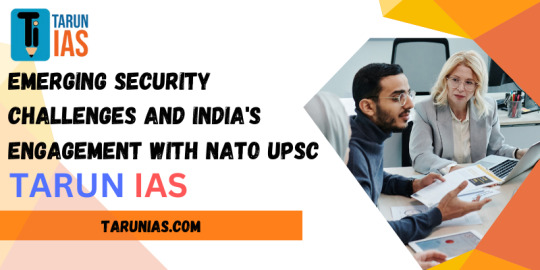
The evolving global landscape presents a multitude of security challenges that transcend national borders. In this context, the North Atlantic Treaty Organization (NATO), traditionally focused on Euro-Atlantic security, is redefining its role to address these emerging threats. India, a rising power with its own set of security concerns, has cautiously engaged with NATO in recent years. This article explores the emerging security challenges, examines India's strategic considerations regarding NATO UPSC (Union Public Service Commission), and analyzes the potential avenues for deeper engagement.
Emerging Security Challenges:
The world is witnessing a shift in the security paradigm. While traditional concerns like territorial disputes persist, new threats such as:
Cybersecurity: The increasing dependence on technology makes nations vulnerable to cyberattacks that can cripple critical infrastructure and disrupt essential services.
Maritime Security: The rise of piracy, illegal migration, and territorial disputes in key maritime regions like the Indo-Pacific necessitate robust naval cooperation.
Terrorism: The global threat of terrorism, with its evolving tactics and transnational networks, demands international collaboration for intelligence sharing and counter-terrorism operations.
Climate Change: The changing climate is triggering environmental disasters and resource scarcity, potentially leading to instability and conflict.
Proliferation of Weapons of Mass Destruction (WMDs): The continued existence of WMDs and the potential for their proliferation by rogue states pose a significant threat to global security.
These challenges require a collective response that transcends geographical boundaries. Here, established organizations like NATO, with its extensive member network and experience in collective security, can play a crucial role.
India's Strategic Considerations:
India, with its vast coastline, nuclear arsenal, and growing strategic weight, has a vital stake in maintaining global security. However, India's engagement with NATO UPSC needs to be viewed through the prism of its traditional foreign policy principles:
Strategic Autonomy: India cherishes its independent foreign policy, allowing it to make decisions based on its national interests without being bound by alliance obligations.
Non-Alignment: India has historically avoided formal military alliances, seeking partnerships based on shared interests rather than bloc politics.
Focus on Indo-Pacific: India's primary security concerns lie in its immediate neighborhood, including the rise of China and unresolved border disputes with Pakistan.
India-NATO Engagement: Potential Avenues:
Despite these considerations, India has recognized the value of cooperation with NATO on specific issues. This engagement can be further strengthened through the following means:
Dialogue and Information Sharing: Regular dialogue on emerging security threats like cyber and maritime security can foster mutual understanding and facilitate a coordinated response.
Joint Exercises: Participation in joint military exercises, even on a limited scale, can enhance interoperability between Indian and NATO forces and build trust.
Defense Cooperation: Collaborating on areas like defense technology development, training programs, and peacekeeping operations can benefit both parties.
Counter-terrorism Cooperation: Sharing intelligence and best practices in counter-terrorism can be crucial in tackling this global menace.
The Way Forward:
While full-fledged membership in NATO is unlikely for India in the foreseeable future, there is immense potential for a deeper and mutually beneficial partnership. India's engagement with NATO can evolve through a calibrated approach that prioritizes dialogue, information sharing, and cooperation on specific security challenges, all while preserving India's strategic autonomy.
Conclusion:
The world is at a crossroads, and navigating the complex security environment requires a collective effort. India, with its growing power and strategic significance, can play a vital role in shaping the global security architecture. By engaging constructively with NATO UPSC, India can contribute to international security while safeguarding its own national interests. This evolving partnership will be keenly observed in the context of the UPSC examinations, where an understanding of India's strategic calculus and its engagement with international organizations is crucial.
Take that first step toward your dream career. Contact Tarun IAS today and let us help you achieve UPSC success!
0 notes
Text
What is the current geopolitical situation of India?
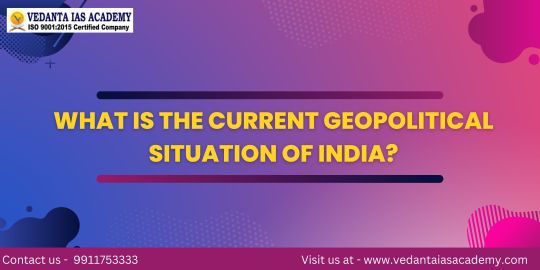
Click for more - Best UPSC Coaching in Delhi
The current geopolitical situation of India is complex and multifaceted, influenced by various domestic, regional, and global factors. Here are some key aspects:
Regional Dynamics: India's relationships with neighboring countries like Pakistan, China, Nepal, and Bangladesh are significant determinants of its geopolitical situation. Tensions and disputes, particularly along the India-China border and the India-Pakistan border, continue to shape regional dynamics.
China Factor: The relationship between India and China is crucial in the region's geopolitical landscape. Issues such as border disputes, trade imbalances, and strategic competition have contributed to a complex dynamic between the two Asian giants. Recent border clashes and increasing Chinese assertiveness in the Indo-Pacific region have added to the complexity.
Strategic Partnerships: India's strategic partnerships with countries like the United States, Russia, Japan, and members of the Quad (USA, Japan, Australia) have gained prominence in its geopolitical calculations. These partnerships are driven by shared strategic interests, security concerns, and economic cooperation.
Global Influence: India's growing economic and military capabilities have bolstered its global influence. It seeks a more prominent role in international organizations and forums such as the United Nations, G20, and BRICS (Brazil, Russia, India, China, South Africa).
Security Challenges: India faces various security challenges, including terrorism, insurgency, and cyber threats, which impact its geopolitical positioning. Managing internal security while projecting strength externally is a key aspect of India's geopolitical strategy.
Economic Considerations: India's economic growth trajectory, trade relations, and energy security also play significant roles in its geopolitical positioning. Efforts to attract foreign investment, diversify trade partners, and enhance infrastructure connectivity influence its geopolitical choices.
Overall, India's geopolitical situation is characterized by a balance of cooperation and competition, as it navigates complex regional and global dynamics to safeguard its interests and pursue its strategic objectives.
0 notes
Text
S. Jaishankar: A Beacon of Strategic Leadership in Global Diplomacy

In the intricate realm of international diplomacy, where nations converge for negotiation and collaboration, one name stands out with unparalleled brilliance — S. Jaishankar. As India’s Minister of External Affairs since 2019, Jaishankar continues to craft a compelling narrative that intertwines strategic leadership, intellectual prowess, and unwavering dedication to the nation. Succeeding Sushma Swaraj, he is the 30th minister to assume this pivotal role.
Jaishankar’s literary contribution, “The India Way: Strategies for an Uncertain World,” delves into the substantial reshaping of the global order from the 2008 global financial crisis to the 2020 coronavirus pandemic.
At the 78th United Nations General Assembly (UNGA), Jaishankar’s address commenced with a warm “Namaste from Bharat.” Reflecting on the success of the G20 summit, he positioned India as a solution provider bridging divides and emphasized the nation’s “One Earth, One Family, One Future” vision.
Unveiling Unknown Facts about S. Jaishankar:
Jaishankar, whose rank in the UPSC led him to the Indian Foreign Service in 1977, boasts over three decades of diplomatic experience. He served as the longest-serving Indian Ambassador to China, playing a pivotal role in strengthening economic, trade, and cultural ties between India and China. Widely regarded as one of the world’s best diplomats, Jaishankar is particularly popular among the youth for his witty and diplomatic responses that consistently advocate for India’s interests in global politics. He was previously married to Ms. Shobha, whom he met while studying at JNU, until her unfortunate battle with cancer. His current wife, Kyoko, is Japanese, and the couple has two sons and a daughter. Inducted into PM Modi’s cabinet in 2019, Jaishankar is entrusted by the Prime Minister for critical diplomatic missions. Jaishankar’s linguistic prowess extends to Tamil, Russian, conversational Japanese, and some Hungarian.
In a series of popular interviews, including the Global Technology Summit 2021, The Sydney Dialogue Panel discussion on “Democracies and Global Technology Governance,” and the India Today Conclave 2021, Jaishankar has shared his insights.
Examining his illustrious career trajectory:
1977: Indian Foreign Service 2001–04: Ambassador to Czechia (Czech Republic) 2007–09: High Commissioner to Singapore 2009–13: Ambassador to China 2014–15: Ambassador to the US 2015–18: Foreign Secretary of India 2019-present: Minister of External Affairs of India Highlighting Achievements and Contributions:
Enhanced Bilateral Relations: Jaishankar played a pivotal role in strengthening India’s ties with major powers like the United States, Russia, and China, fostering economic cooperation, strategic partnerships, and diplomatic collaboration. COVID-19 Diplomacy: Leading India’s efforts during the pandemic, Jaishankar initiated the “Vaccine Maitri” initiative, showcasing India’s commitment to global public health. Boundary Resolution: Significant progress in resolving longstanding border disputes, particularly with China, was achieved under Jaishankar’s leadership through dialogue and negotiation. Climate Diplomacy: An advocate for climate action, Jaishankar represented India’s interests in international forums, underscoring the country’s commitment to renewable energy and sustainability.
As India asserts its role on the global stage, S. Jaishankar stands as a steadfast leader, navigating the intricacies of international diplomacy. His adeptness in fostering alliances, addressing challenges head-on, and navigating complex international relationships has not only fortified India’s position but has also contributed to a more stable and interconnected world, ensuring a brighter future on the global stage.
0 notes
Text
Hot Springs and Gogra Post
After Chinese troops’ incursion in eastern Ladakh in 2020, Patrolling Point 15 (PP15) in Hot Springs and PP17A near Gogra Post were among the four friction points between the two armies, the other two being PP14 in Galwan Valley and the north bank of Pangong Tso.
In a major breakthrough, the Indian and Chinese sides have started disengaging at Patrolling Point (PP15) in the Gogra-Hot spring region of eastern Ladakh. This comes after the armies reached a consensus in the 16th round of the India-China Corps Commander level meet.
Location:
Gogra Post is east of the point where the Chang Chenmo river takes a hairpin bend coming southeast from Galwan Valley and turning southwest.
The area is north of the Karakoram Range of mountains, which lies north of the Pangong Tso lake, and south east of Galwan Valley.
Significance of Hot Springs and the Gogra Post:
The area is adjacent to Kongka Pass, one of the main passes that China claims marks the boundary between India and China.
India’s claim to the international boundary lies significantly east, covering the whole Aksai Chin region.
Hot Springs and Gogra Post are located at the boundary between two of China’s most historically troubled provinces (Xinjiang and Tibet).
What is the importance of Disengagement on Hot Springs and the Gogra Post?
The disengagement in the Hot springs-Gogra region will de-escalate the border tension with China as it officially ends the eye-to-eye confrontation at all new friction points created by the PLA in 2020.
The regions, PP15 and PP17A, are located in an area where India and China largely agree on the LAC alignment.
After the 2020 ingress, there was a significant build-up of the Chinese troops and deployment of heavy weapons in Hot springs-Gogra region
Kongka Pass Location:
Kongka Pass, also known as the Kongka La, is a low mountain pass that cuts through the Chang Chenmo Valley. It is located in Ladakh, on the disputed India-China border.
Galwan Valley Location:
The valley is strategically placed between Ladakh in the west and Aksai Chin in the east, both of which are currently under China’s control as part of the Xinjiang Uyghur Autonomous Region.
Read more :... https://iasnext.com/hot-springs-and-gogra-post-upsc-current-affairs/
0 notes
Text
Current Affairs for UPSC
Current affairs are very crucial for the UPSC examination. If any examinee wants to pass the UPSC examination, he/she should read current affairs regularly. UPSC exam procedure includes processes like prelims, mains, and interview examinations. To complete the syllabus of the UPSC examination like Indian Polity and governance- constitution, Indian Economy, Environment and climate change, Social Development, General Science, Indian and world Geography, and National and international events, etc, The examinee should read current affairs regularly.
Here, Plutus IAS provides the latest current affairs for the UPSC examination free of cost. It is the best coaching center for UPSC examinations in India. We use to collect the latest news from famous newspapers like The Hindu, The Indian Express, The Times of India, and others famous Newspapers.
The UPSC aspirants find all the updated national and international news like:
GST Council Meeting Highlights: GST on biofuel is down from 18% to 5%
On the return to the old pension scheme
Indo-China Border Dispute at Torsa Nala Yangtse
Lord Nataraja Idol
Lord Nataraja Idol
National Energy Conservation Day
Curb Individualism in Public Health
End to End Encryption
Schedule Tribes List
Reservation in Private Job
So, collect and read daily, weekly, and monthly current affairs from Plutus IAS current affairs page and enhance your general knowledge.
#IAS current Affairs#education#current affairs for upsc#daily current affairs#best ias coaching in noida#best current affairs for upsc#current affairs today#current affairs#best daily current affairs for upsc#best current affairs for UPSC#weekly current affairs#monthly current affairs#Plutus IAS#Plutus IAS current affairs
0 notes
Photo
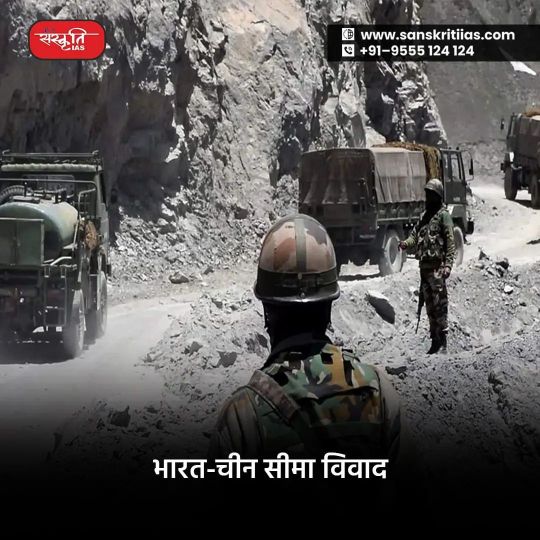
भारत-चीन सीमा विवाद हाल ही में, चीन द्वारा भारत-भूटान-चीन ट्राई-जंक्शन के किनारे तोरसा नाला के पास एक रोपवे स्थापित किया गया। चीन द्वारा इस पूरे क्षेत्र में सड़कों और अन्य बुनियादी ढांचे को लगातार मजबूत किया जा रहा है, जहां कुछ साल पहले भारतीय और चीनी सेना के बीच गतिरोध देखा गया था। https://www.sanskritiias.com/hindi/news-articles/india-china-border-dispute #indiachina #borderdispute #LAC #ceasefireline #McMahonLine #AksaiChin #GalvanValley #Chumbivally #Tawang #IAS #UPSC #Prelims #Mains #GS #News_Article #SanskritiIAS https://www.instagram.com/p/CmOtbJhP2RB/?igshid=NGJjMDIxMWI=
#indiachina#borderdispute#lac#ceasefireline#mcmahonline#aksaichin#galvanvalley#chumbivally#tawang#ias#upsc#prelims#mains#gs#news_article#sanskritiias
0 notes
Text
26-05-2020 Current affairs & Daily News Analysis

BALBIR SINGH DOSANJH Balbir Singh Senior, the three-time Olympic gold medal-winning hockey legend passed away. He was 95. About: Balbir Singh Dosanjh (1923 – 2020) was an Indian hockey player. He was often called Balbir Singh Senior to distinguish him from other Indian hockey players named Balbir Singh. He was a three-time Olympic gold medallist, having played a key role in India's wins in London (1948), Helsinki (1952) (as vice captain), and Melbourne (1956) (as captain) Olympics. His Olympic record for most goals scored by an individual in an Olympic men's hockey final remains unbeaten. Singh set this record when he scored five goals in India's 6–1 victory over the Netherlands in the gold medal game of the 1952 Olympic Games. One of the country's greatest athletes, Balbir Senior was the only Indian among 16 legends chosen by the International Olympic Committee across modern Olympic history. Singh was the first sports personality to be honoured with the Padma Shri award, in 1957. Source : All India Radio ( Sports ) Read UPSC Current affairs and Daily News Analysis from Best IAS Coaching Institute in Bangalore Vignan IAS Academy PUNTIUS SANCTUS Velankanni in Tamil Nadu has thrown up a new species of small freshwater fish of the family Cyprinidae. The silver-hued fish has been christened Puntius sanctus — ‘sanctus’ is Latin for holy — after the popular pilgrim town. About: Encountered in a small waterbody in Velankanni, Puntius sanctusgrows to a length of 7 cm. It is used both as food and as an aquarium draw The Puntius species are known locally as ‘Paral’ in Kerala and ‘Kende’ in Tamil Nadu. They are purely freshwater fishes. While the genus shows great species richness in Kerala and Tamil Nadu, the specimen from Velankanni bears “distinct differences” from its Puntius cousins. Its physical characteristics included a protractible mouth, a pair of maxillary barbels (a sensory organ near the snout), 24-25 lateral line scales and 10 pre-dorsal scales. Source : The Hindu ( Environment ) Read UPSC Current affairs and Daily News Analysis from Best IAS Coaching Institute in Bangalore Vignan IAS Academy NUMBER-18 - FLYING BULLETS The Indian Air Force (IAF) is set to operationalize its squadron called the Number-18 - Flying Bullets with a fleet of the Light Combat Aircraft, LCA Tejas at its Sulur base near Coimbatore. It will be launched by the Chief of the Air Staff, Air Chief Marshal R K S Bhadauria on May 27, 2020. About: It will be the second Indian Air Force squadron to operate with the modern multi-role light fighter aircraft. The No.18 Squadron was formed in 1965 and has the distinction of being the first to land and operate from Srinagar. It has also produced a Param Veer Chakra awardee during the 1971 war with Pakistan. It has been revived on the 1st April this year at the Sulur base. The LCA Tejas is a tailless, fourth generation, compound delta-wing aircraft developed by the Hindustan Aeronautics Limited. The supersonic combat aircraft is considered the lightest and the smallest of its kind. Source : All India Radio ( Defence & Security ) Read UPSC Current affairs and Daily News Analysis from Best IAS Coaching Institute in Bangalore Vignan IAS Academy CICADAS A brood of periodical cicadas, noisy insects that breed underground for as long as 13-17 years are expected to emerge into some states on the east coast of the US this year. About: Cicadas are insects that spend most of their lives underground and emerge from the soil mainly to mate. Once out of the ground, their life span is fairly short, somewhere between two-four weeks. The insects are found in the America’s as well as New Zealand and Australia. There will be major outbreaks of periodical cicadas in 2020 and 2021. There are three species of 17-year cicadas and three species of 13-year cicadas. The name 13 and 17 year refers to the number of years that cicada nymphs take to reach adulthood. It is not clear why their development period is so long. After emerging from the ground in billions, the cicadas shed their exoskeletons or outer skins to take their winged form. The lifespan of adult cicadas is short, about two to four weeks during which time they feed relatively little and mate. This year, the grouping dubbed Brood IX will emerge after spending 17 years underground, into states including Southwest Virginia, parts of North Carolina and West Virginia. The emergence of over 1.5 million cicadas per acre is expected. Source : Indian Express (Environment ) Read UPSC Current affairs and Daily News Analysis from Best IAS Coaching Institute in Bangalore Vignan IAS Academy PURANDARA DASA Department of Archaeology in Karnataka will soon commence field research work to explore archaeological evidences that may put an end to speculations regarding the birthplace of Purandara Dasa. Though it was widely believed that the mystic poet was born in Purandharagad, Maharashtra, many in Malnad claim that he hailed from the region. About: Purandara Dāsa (1484 – 1565) of Haridasa movement, was a renowned composer of Carnatic music, a Vaishnava poet, a saint and a social reformer. He was a disciple of the Dvaita philosopher-saint Vyasatirtha. His guru, Vyasatirtha, glorified Purandara Dasa in a song thus: Dāsarendare purandara dāsarayya. Purandara Dasa was a wealthy merchant of gold, silver and other miscellaneous jewellery from Karnataka, who gave away all his material riches to become a Haridasa (literally meaning a servant of Lord Hari or Lord Krishna). As a devotional singer who made the difficult Sanskrit tenets of Srimad Bhagavatam available to everyone in simple and melodious songs. He formulated the basic lessons of teaching Carnatic music by structuring graded exercises known as Svaravalis and Alankaras, and at the same time, he introduced the raga Mayamalavagowla as the first scale to be learnt by beginners in the field – a practice that is still followed today. In honour of his significant contributions to Carnatic music, he is widely referred to as the "father" of Carnatic music. Purandara Dasa is noted for composing Dasa Sahithya, as a Bhakti movement vocalist, and a music scholar. Source : The Hindu ( Culture ) Read UPSC Current affairs and Daily News Analysis from Best IAS Coaching Institute in Bangalore Vignan IAS Academy EARTH'S MAGNETIC FIELD WEAKENS As per the reports, the magnetic field around the earth, on an average, has lost almost 10% of its strength over the last two centuries. The magnetic field of the earth protects us from the solar radiation. South Atlantic Anomaly (SAA): However, a rapid shrink has been observed in the South Atlantic Anomaly (SAA), a stretch between Africa and South America. It is an area where the Earth's inner Van Allen radiation belt comes closest to the Earth's surface, dipping down to an altitude of 200 kilometres. This leads to an increased flux of energetic particles in this region and exposes orbiting satellites to higher-than-usual levels of radiation. The effect is caused by the non-concentricity of the Earth and its magnetic dipole. The SAA is the near-Earth region where the Earth's magnetic field is weakest relative to an idealized Earth-centered dipole field. Pole reversal: One most speculated reason behind this is that there is a chance that the time for Earth's pole reversal is coming near. Pole reversal is when the north and south magnetic poles flip. While this flip will not occur immediately or suddenly, and will happen over centuries, there would be multiple north and south magnetic poles during this period, all around the planet. This is definitely not the first time that pole reversal will be happening on the Earth. This event has occurred few times in the history of our planet, as per the scientists and we are long overdue by the average rate at which these reversals take place (roughly every 250,000 years). Impact: This is not going to affect or alarm the general public to a huge extent. But it is causing technical difficulties for various satellites and spacecrafts, as the magnetic field getting weaker, charged particles from the cosmos can penetrate through to the altitudes that low-Earth orbiting satellites fly at. Source : News18 ( Science & Technology ) Read UPSC Current affairs and Daily News Analysis from Best IAS Coaching Institute in Bangalore Vignan IAS Academy CoAST India India Observatory, an open-source database, has come up with a GIS-enabled dashboard that includes an India map reflecting the movement of migrants in real time on their long journeys, along with facilities and relief organisations on their routes. About: The platform, a collaboration with Anand-based Forest Ecological Security (FES) as its main nodal point, is called CoAST India (Collaboration/Covid Action Support Group). It draws information from 55 organisations on the ground, mostly in villages, and aims to make such data available so that it would enable governments and small local civil society groups to be of assistance. The map matches “time and spatial data, on administrative facilities in the area, transportation and healthcare facilities of an area and summaries, on the fly, in real time of people passing by. India Observatory was set up in December 2019, with FES focused on ecological issues about forests, water bodies, conservation, etc. that needed “a bird’s eye view or a satellite’s vision”. Source : Indian Express ( Social Issues ) Read UPSC Current affairs and Daily News Analysis from Best IAS Coaching Institute in Bangalore Vignan IAS Academy INDIA-CHINA BORDER DISPUTE The India-China border has been witnessing tensions over the past month, with incidents reported in at least four different locations along the Line of Actual Control (LAC). About: The border is not fully demarcated and the LAC is neither clarified nor confirmed by the two countries. India-China border is divided into three sectors:The LAC in the western sector falls in the union territory of Ladakh and is 1597 km long, The middle sector of 545 km length falls in Uttarakhand and Himachal Pradesh, and The 1346 km long eastern sector falls in the states of Sikkim and Arunachal Pradesh. The main differences are in the Western and Eastern sectors. India sees China as occupying 38,000 sq km in Aksai Chin. In the east, China claims as much as 90,000 sq km, extending all across Arunachal Pradesh. The middle sector is the least disputed sector, while the western sector witnesses the highest transgressions between the two sides. Source : The Hindu ( International ) Read UPSC Current affairs and Daily News Analysis from Best IAS Coaching Institute in Bangalore Vignan IAS Academy ACHARYA JAGADISH CHANDRA BOSE INDIAN BOTANIC GARDEN Cyclone Amphan has caused massive damage to the trees in the Acharya Jagadish Chandra Bose Indian Botanic Garden. About: The Acharya Jagadish Chandra Bose Indian Botanic Garden was previously known as Indian Botanic Garden and the Calcutta Botanic Garden. It is situated in Shibpur, Howrah near Kolkata. The gardens exhibit a wide variety of rare plants and a total collection of over 12,000 specimens spread over 109 hectares. It is under Botanical Survey of India (BSI) of Ministry of Environment and Forests, Government of India. The gardens were founded in 1786. Source : The Hindu ( Environment ) Read UPSC Current affairs and Daily News Analysis from Best IAS Coaching Institute in Bangalore Vignan IAS Academy JIOMART Reliance Industries (RIL) has taken its e-commerce platform JioMart live in an attempt to take on rivals Amazon and Flipkart. Pilots were carried out in Navi Mumbai, Thane and Kalyan. About: Jiomart, an online-offline model that combines the strengths of Reliance Jio and Reliance Retail, has started offering products at a minimum 5% discount to the maximum retail price on select products. JioMart has started offering more than 50,000 products in the fruits and vegetables, dairy and bakery, staples, snacks and branded foods, beverages, personal care, home care and baby care categories. Customers can get free home delivery on no minimum-order value, with a no-questions-asked-return policy. Facebook and WhatsApp had signed a commercial agreement with Reliance Jio over JioMart so that the online venture’s customers can place order through the social media platforms. Source : The Hindu ( Economy ) Read UPSC Current affairs and Daily News Analysis from Best IAS Coaching Institute in Bangalore Vignan IAS Academy Daily Current affairs and News Analysis Best IAS Coaching institutes in Bangalore Vignan IAS Academy Contact Vignan IAS Academy Enroll For IAS Foundation Course from Best IFS Academy in Bangalore Read the full article
0 notes
Text
Daily Current Affairs 21st April 2020
Today’s Important Topic’s For UPSC Preparation
1. CHINA SAYS INDIAN TRADE CURBS ARE AGAINST WTO PRINCIPLES..2. AAROGYA SETU APP MUST FOR LABOURERS, SAYS CPWD.3. RBI RAISES WMA LIMIT FOR APRIL-SEPT.4. U.S. CRUDE FUTURES PLUNGE OVER 40% TO 1986 LOW.5. OPEN UP E-COM SERVICES: IAMAI.
CHINA SAYS INDIAN TRADE CURBS ARE AGAINST WTO PRINCIPLESWTO:
The World Trade Organization(WTO) is an intergovernmental organization that is concerned with the regulation of international trade between nations.
The WTO officially commenced on 1 January 1995 under the Marrakesh Agreement, signed by 123 nations on 15 April 1994, replacing the General Agreement on Tariffs and Trade(GATT), which commenced in 1948.
It is the largest international economic organization in the world.
The WTO deals with regulation of trade in goods, services and intellectual property(TRIPS) between participating countries by providing a framework for negotiating trade agreements and a dispute resolution process.
Aimed at enforcing participant’s adherence to WTO agreements, which are signed by representatives of member governments and ratified by their parliaments.
The WTO prohibits discrimination between trading partners, but provides exceptions for environmental protection, national security, and other important goals.
Trade-related disputes are resolved by independent judges at the WTO through a dispute resolution process.
As of 2019 the WTO has 164 member countries, with Liberia and Afghanistan the most recent members, having joined in July 2016, and 23 “observer”.
History:
The General Agreement on Tariffs and Trade (GATT) traces its origins to the 1944 Bretton Woods Conference,which laid the foundations for the post-World War II financial system and established two key institutions, the International Monetary Fund (IMF) and the World Bank.
The conference delegates also recommended the establishment of a complementary institution to be known as the International Trade Organization (ITO), which they envisioned as the third leg of the system.
In Havana in 1948, the UN Conference on Trade and Employment concluded a draft charter for the ITO, known as the Havana Charter, which would have created extensive rules governing trade, investment, services, and business and employment practices.
The Havana Charter never entered into force, primarily because the U.S. Senate failed to ratify it. As a result, the ITO was stillborn.
Meanwhile, an agreement as the GATT signed by 23 countries in Geneva in 1947 came into force on Jan 1, 1948 with the following purposes:
(1) To phase out the use of import quotas.
(2) And to reduce tariffs on merchandise trade.
The GATT became the only multilateral instrument(not an institution) governing international trade from 1948 until the WTO was established in 1995.
Despite its institutional deficiencies, the GATT managed to function as a de facto international organization, sponsoring eight rounds (A round is a series of multilateral negotiations) of multilateral trade negotiations.
The Uruguay Round,conducted from 1987 to 1994, culminated in the Marrakesh Agreement, which established the World Trade Organization (WTO).
Why WTO replaced the GATT:
The GATT was only a set of rules and multilateral agreements and lacked institutional structure.
The trade in services and intellectual property rights were not covered by regular GATT rules.
Governance:Ministerial Conference:
The topmost decision-making body of the WTO is the Ministerial Conference, which usually meets every two years.
It brings together all members of the WTO, all of which are countries or customs unions.
The Ministerial Conference can take decisions on all matters under any of the multilateral trade agreements.
General Council:
The General Council is the WTO’s highest-level decision-making body located in Geneva, meeting regularly to carry out the functions of the WTO.
It has representatives (usually ambassadors or equivalent) from all member governments and has the authority to act on behalf of the ministerial conference which only meets about every two years.
Appellate Body:
The Appellate Body was established in 1995 under Article 17 of the Understanding on Rules and Procedures Governing the Settlement of Disputes (DSU).
The DSB shall appoint persons to serve on the Appellate Body for a four-year term.
It is a standing body of seven persons that hears appeals from reports issued by panels in disputes brought by WTO Members.
Why in News?
India’s recent policy to curb opportunistic takeovers of domestic companies goes against the World Trade Organisation (WTO) principles, the spokesperson of the Chinese Embassy
This is the first response from the Chinese side after the Ministry of Commerce and Industry in an April 17 decision imposed restrictions saying companies from countries that share borders with India can invest “only under the government route”.
The additional barriers set by Indian side for investors from specific countries violate the WTO’s principle of non-discrimination, and go against the general trend of liberalisation and facilitation of trade and investment.
More importantly, they do not conform to the consensus of the G20 leaders and Trade Ministers to realise a free, fair, non-discriminatory, transparent, predictable and stable trade and investment environment, and to keep our markets open,” said Counsellor Ji Rong, spokesperson of the Chinese Embassy.
AAROGYA SETU APP MUST FOR LABOURERS, SAYS CPWDAarogya Setu App:
The Government of India launched ‘Aarogya Setu’ an app to track the cases of COVID-19 and alert the citizens of the country to keep safe.
It uses GPS and Bluetooth features of smartphones to track the infection.
It helps in determining whether the person has been in close contact with any other infected person or not.
The government has launched the app in 11 different languages.
The mobile app has been developed by the National Informatics Centre (NIC) that comes under the Ministry of Electronics and Information Technology.
Why in News?
Central government organisations involved in construction, including various metro rail corporations, were instructed by the Central Public Works Department (CPWD) to ensure that “all labour personnel/staff” returning to work from Monday have downloaded the government’s COVID-19 tracking app — Aarogya Setu.
The organisations were also asked to make sure there is no resumption of work in coronavirus containment zones and only workers still present at the camps should be asked to return to work at a particular site.
Standard operating procedures, such as those issued by the National Real Estate Development Council (NAREDCO) for private developers, taking into account the advice of the Health and Family Welfare and Home Ministries should be prepared and followed, the organisations were told.
0 notes
Text
SUGGESTIONS TO IMPROVE INDIA NEPAL RELATIONS UPSC IAS
SUGGESTIONS TO IMPROVE INDIA NEPAL RELATIONS UPSC IAS
To enhance people-to-people relations, Nepal and India must resolve contentious issues relating to the border, including the two major areas of dispute at Susta and Kalpani.
India must respect Nepal’s sovereignty as mutual respect is a key in bilateral relations and India should not meddle in the internal political affairs of Nepal or panic over China’s growing investment in Nepal.
India needs to…
View On WordPress
0 notes
Text
Hot Springs and Gogra Post
After Chinese troops’ incursion in eastern Ladakh in 2020, Patrolling Point 15 (PP15) in Hot Springs and PP17A near Gogra Post were among the four friction points between the two armies, the other two being PP14 in Galwan Valley and the north bank of Pangong Tso.
In a major breakthrough, the Indian and Chinese sides have started disengaging at Patrolling Point (PP15) in the Gogra-Hot spring region of eastern Ladakh. This comes after the armies reached a consensus in the 16th round of the India-China Corps Commander level meet.
Location:
Gogra Post is east of the point where the Chang Chenmo river takes a hairpin bend coming southeast from Galwan Valley and turning southwest.
The area is north of the Karakoram Range of mountains, which lies north of the Pangong Tso lake, and south east of Galwan Valley.
Significance of Hot Springs and the Gogra Post:
The area is adjacent to Kongka Pass, one of the main passes that China claims marks the boundary between India and China.
India’s claim to the international boundary lies significantly east, covering the whole Aksai Chin region.
Hot Springs and Gogra Post are located at the boundary between two of China’s most historically troubled provinces (Xinjiang and Tibet).
What is the importance of Disengagement on Hot Springs and the Gogra Post?
The disengagement in the Hot springs-Gogra region will de-escalate the border tension with China as it officially ends the eye-to-eye confrontation at all new friction points created by the PLA in 2020.
The regions, PP15 and PP17A, are located in an area where India and China largely agree on the LAC alignment.
After the 2020 ingress, there was a significant build-up of the Chinese troops and deployment of heavy weapons in Hot springs-Gogra region
Kongka Pass Location:
Kongka Pass, also known as the Kongka La, is a low mountain pass that cuts through the Chang Chenmo Valley. It is located in Ladakh, on the disputed India-China border.
Read more: https://iasnext.com/hot-springs-and-gogra-post-upsc-current-affairs/
0 notes
Text
20-05-2020 Current affairs & Daily News Analysis

Govt to further revise criteria for classifying 'medium' enterprises under MSME definition: Gadkari Days after changing the definition of Micro, Small and Medium Enterprises (MSMEs), the government has decided to further revise the criteria for medium units by enhancing the investment and turnover limits to up to ₹50 crore and ₹200 crore respectively.

About: As per the revised definition, any firm with investment up to ₹1 crore and turnover under ₹5 crore will be classified as “micro”. A company with investment up to ₹10 crore and turnover up to ₹50 crore will be classified as “small” and a firm with investment up to ₹20 crore and turnover under ₹100 crore will be classified as “medium”. The previous criteria for classifying enterprises in the “medium” category was investment up to ₹10 crore and turnover of up to ₹5 crore. Source : The Hindu ( Economy ) Read UPSC Current affairs and Daily News Analysis from Best IAS Academy in Bangalore Vignan IAS Academy Govt launches National Test Abhyas mobile app for candidates to take mock tests for JEE Main and NEET Union Human Resource Development (HRD) Minister launched a new mobile app called the ‘National Test Abhyas'.
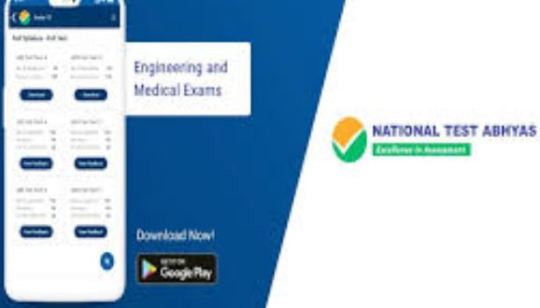
About: The AI-powered mobile App has been developed by National Testing Agency (NTA) to enable candidates to take mock tests for upcoming exams such as JEE Main, NEET under the NTA’s purview. The app has been launched to facilitate candidates’ access to high quality mock tests in their homes since there was a demand for making up the loss to students due to closure of educational institutions and NTA’s Test-Practice Centers (TPCs) due to the continuing lockdown. Source : PIB ( Education ) Read UPSC Current affairs and Daily News Analysis from Best IAS Academy in Bangalore Vignan IAS Academy mRNA-1273 US stock markets went soaring on the back of promising results from mRNA-1273 vaccine against novel coronavirus disease (Covid-19) developed by US pharmaceutical company Moderna.
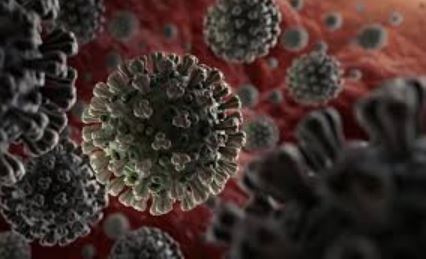
About: mRNA-1273 is the working name of Moderna’s vaccine, which is currently in Phase 1 clinical trials under the aegis of the US National Institute of Allergy and Infectious Diseases (NIAID). The mRNA in the name means messenger RNA, which carries the genetic formula for the coding of a specific protein. In this vaccine, the particular mRNA used codes for the most distinguishing feature of the SARS-CoV2 — the spike protein — which is also the appendage that the virus uses to enter the cell and replicate. The vaccine, when injected into a person, codes for the spike protein. Thus even without the introduction of an attenuated (recognisable but not harmful) virus into the body, the body learns what the virus looks like and arms itself with the antibodies that are required to act against it. Source : Indian Express ( Health ) Read UPSC Current affairs and Daily News Analysis from Best IAS Academy in Bangalore Vignan IAS Academy India resumes purchase of Malaysian palm oil: Report Indian buyers have resumed purchases of Malaysian palm oil after a four-month gap following a diplomatic row, with buying spurred by a fall in domestic inventories and discounted prices.
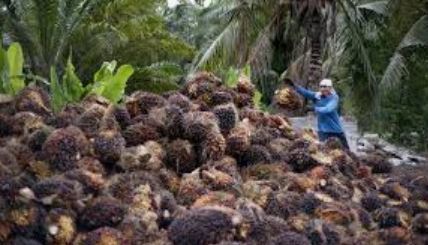
About: The renewed purchases come amid improving trade relations between the two countries after the formation of a new government in Kuala Lumpur, with Malaysia signing a deal last week to buy a record 100,000 tonnes of Indian rice. Leading Indian importers last week contracted up to 200,000 tonnes of crude palm oil from Malaysia, the world’s No.2 producer after Indonesia, to be shipped in June and July. A restart to buying by India, the world’s biggest edible oil importer, could further support Malaysian palm oil prices. India buys more than 9 million tonnes of palm oil a year, accounting for nearly two-thirds of its total edible oil imports, and took a record 4.4 million tonnes of Malaysian palm oil in 2019. Source : Times of India ( Economy ) Read UPSC Current affairs and Daily News Analysis from Best IAS Academy in Bangalore Vignan IAS Academy EMPLOYEES PROVIDENT FUND (EPF) Government has notified cut in Employees Provident Fund (EPF) contribution to 10% for May, June, July.
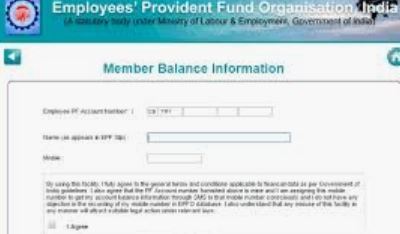
About: The Centre has notified the reduction in statutory rate of contributions from 12 per cent to 10 per cent for wage months period from May to July, 2020 for all class of establishments covered under the Employees Provident Fund and Miscellaneous Provisions Act, 1952 . Reduction in rate of EPF contributions from 12 per cent to 10 percent of basic wages and Dearness allowances is intended to benefit both 4.3 Crore employees. As a result of reduction in statutory rate of contributions, the employee will have a higher take home pay. Important Info : Exemptions? This reduction of rate of contribution is not applicable to establishments like Central and State Public Sector enterprises or any other establishment owned or controlled by or under control of the Central or State Government.The reduced rate is also not applicable for Pradhan Mantri Garib Kalyan Yojana-PMGKY beneficiaries. Source : All India Radio ( Economy ) Read UPSC Current affairs and Daily News Analysis from Best IAS Academy in Bangalore Vignan IAS Academy WAG12 The Indian Railways has operationalised its first 12,000 hp electric locomotive manufactured locally by French rolling stock manufacturer Alstom. The loco is named WAG12 with Number 60027.
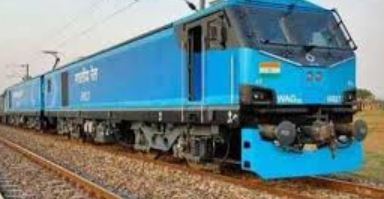
About: The locomotive made its maiden commercial run between Deen Dayal Upadhyaya Station to Shivpur. India became the sixth country in the world to join the club of countries producing high horsepower locomotive indigenously. It has been manufactured at the Madhepura Electric Locomotive Pvt. Ltd. (MELPL), in Bihar, which is a joint venture between the French major and the Indian railways holding an equity share of 74% and 26% respectively. The joint venture remains the largest Foreign Direct Investment in the railways sector. Entry of WAG 12B (e-loco) into the Indian Railways fleet will allow faster and safer movement of heavier freight trains capable to haul around 6000 tonnes at a top speed of 120 kmph. It is the first time, high horse power locomotive has been operationalised on broad gauge track in the world. Source : Economic Times ( Economy ) Read UPSC Current affairs and Daily News Analysis from Best IAS Academy in Bangalore Vignan IAS Academy 73rd WORLD HEALTH ASSEMBLY Dr. Harsh Vardhan, Union Minister of Health participated in the 73rd World Health Assembly (WHA) through Video Conference.

About: The World Health Assembly is the decision-making body of World Health Organization (WHO). It is attended by delegations from all WHO Member States and focuses on a specific health agenda prepared by the Executive Board. The main functions of the World Health Assembly are to determine the policies of the Organization, appoint the Director-General, supervise financial policies, and review and approve the proposed programme budget. The Health Assembly is held annually in Geneva, Switzerland. Important Info : At the assembly, more than 100 countries including India backed a resolution drafted by the European Union calling for an independent inquiry into the pandemic, which has claimed more than 3 lakh lives globally so far. Source : PIB ( International ) Read UPSC Current affairs and Daily News Analysis from Best IAS Academy in Bangalore Vignan IAS Academy WORLD BEE DAY 2020 World Bee Day 2020 is being celebated on May 20 under the theme “Save the Bees.”

About: To raise awareness of the importance of Bees and other pollinators, such as butterflies, bats and hummingbirds, the threats they face and their contribution to sustainable development, the UN designated 20 May as World Bee Day. Why 20 May? 20 May coincides with the birthday of Anton Janša, who in the 18th century pioneered modern beekeeping techniques in his native Slovenia and praised the bees for their ability to work so hard, while needing so little attention. Important Info : Recognizing the dimensions of the pollination crisis and its links to biodiversity and human livelihoods, the Convention on Biological Diversity has made the conservation and sustainable use of pollinators a priority.In 2000, the International Pollinator Initiative (IPI) was established at the Fifth Conference of Parties (COP V) as a cross-cutting initiative to promote the sustainable use of pollinators in agriculture and related ecosystems. Source : United Nations ( Environment ) Read UPSC Current affairs and Daily News Analysis from Best IAS Academy in Bangalore Vignan IAS Academy NEPAL-INDIA BORDER DISPUTE The Nepal government has decided it will release a new, updated political map which will include the disputed areas of Lipulekh, Kalapani and Limpiyadhura as part of Nepali territory.

About: This comes after the Indian defence ministry recently inaugurated a link road to the China border that passes through Lipulekh. The Kalapani territory is an area under Indian administration as part of Pithoragarh district in the Uttarakhand state. Following the road inauguration, the Nepal government released a press note stating that the eastern area from Mahakali River belongs to Nepal as per the Sugauli Treaty, 1816. But the Indian government said that it had constructed the road in its own territory. A few days later, the Indian Army chief General M.M. Naravane accused Nepal of acting ‘at the behest of someone else,’ a thinly veiled reference to China. Source : The Wire ( International ) Read UPSC Current affairs and Daily News Analysis from Best IAS Academy in Bangalore Vignan IAS Academy SOLAR MINIMUM The sun is said to have gone into a state called the 'solar minimum' and is about to enter the deepest period of 'sunshine recession' as sunspots are virtually not visibly at all. Some reports suggest that it has been almost 100 days this year when the sun has shown zero sunspots.

About: Sun has a cycle that lasts on average 11 years, and right now we are at the peak of that cycle. Every 11 years or so, sunspots fade away, bringing a period of relative calm. This is called the solar minimum. And it’s a regular part of the sunspot cycle. While intense activity such as sunspots and solar flares subside during solar minimum, that doesn’t mean the sun becomes dull. Solar activity simply changes form. For instance, during solar minimum we can see the development of long-lived coronal holes. This may cause health risks to astronauts travelling through space as "the sun’s magnetic field weakens and provides less shielding from these cosmic rays. Source : Times Now ( Science & Technology ) Read UPSC Current affairs and Daily News Analysis from Best IAS Academy in Bangalore Vignan IAS Academy Daily Current affairs and News Analysis Best IAS Coaching institutes in Bangalore Vignan IAS Academy Contact Vignan IAS Academy Enroll For IAS Foundation Course from Best IFS Academy in Bangalore Read the full article
#BestIASAcademyinBangalore#bestiascoachingcentreinbangalore#bestiascoachinginbangalore#bestupsccoachinginbangalore#BestUPSCCoaching
0 notes
Text
INDIA TIBET UPSC IAS
INDIA TIBET UPSC IAS
Tibet presents a most contentious foreign policy challenge to the Indian postcolonial state. Over and above the dilemma between standing for self-determination and upholding the norm of non-interference, Tibet additionally complicates India’s challenges by being locked into India’s own territorial dispute with China.
The involvement of Tibet in India’s border dispute with China and its…
View On WordPress
0 notes